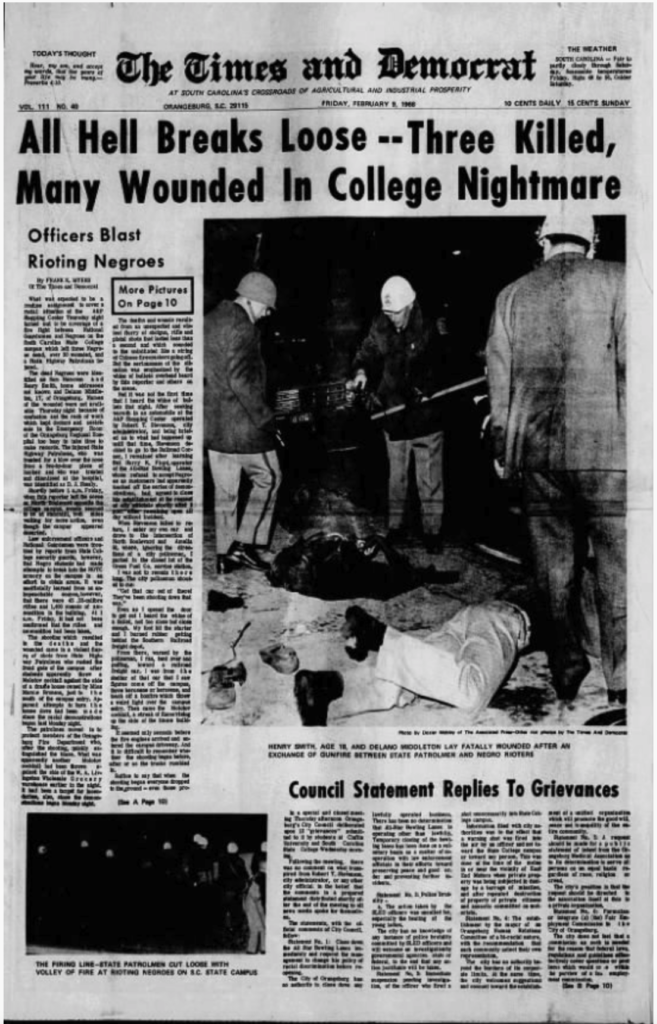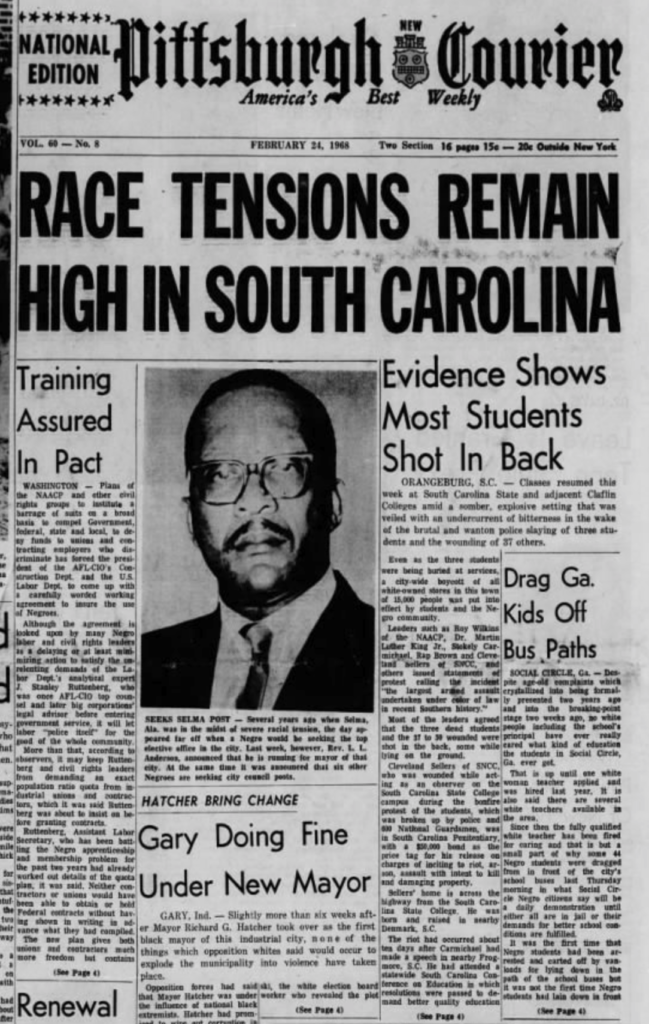On February 8, 1968, police opened fire on a group of unarmed Black student protestors on the South Carolina State University campus. The students were protesting segregation at a local business. When the smoke cleared, three students were dead and 27 wounded. Nine officers were charged with excessive force and later acquitted as the Governor called the killings, “One of the saddest days in the history of South Carolina.”
The violence was the culmination of events that began earlier that week when Black students organized a protest at the nearby All-Star Bowling Lanes on Monday, February 5th. Some 200 students gathered to protest the establishment’s policy of segregating black and white patrons. Harry F. Floyd, the operator of the bowling alley, appealed to the City Council. He asserted that his private business did not fall under civil rights laws.
The next two evenings brought more protests, escalating tensions, and some arrests. National Guard troops were called in as protestors threw rocks and bricks at passing automobiles, including police cars. There were reports of broken windows, shots fired, and injuries. The bowling alley closed down, and rumors that protestors were burning buildings circulated throughout the community.
By the evening of the 8th, Orangeburg was a tinderbox. Once again, Black students gathered on the campus of South Carolina State University. Angry protestors, many of whom had been beaten by police in the previous days, started a bonfire on campus. Firefighters arrived to douse the flames, and highway patrolmen moved in to protect the fireman. Students responded by throwing sticks and rocks at the highway patrolmen. One protestor grabbed a heavy piece of a wooden banister, taken from a nearby unoccupied house, and threw it at the police. It hit an officer in the head, who fell to the ground injured and bleeding. Fellow officers feared he’d been shot, prompting one to fire a warning shot into the air. Hearing the noise, the other highway patrolmen thought they were being fired upon and began shooting into the crowd. Some students were hit in the back as they tried to flee. Henry Smith, Samuel Hammond, and Delano Middleton were killed and at least 27 others wounded. Cleveland Sellers was among the injured. He was an activist and state coordinator for the Student Non-Violent Coordinating Committee. The police considered him dangerous, and he was arrested and convicted of inciting a riot.
The killings came to be known as the Orangeburg Massacre, and Governor Robert E. McNair called it, “One of the saddest days in the history of South Carolina.” Prosecutors leveled charges of excessive force against nine officers, all of whom were acquitted. Meanwhile, Cleveland Sellers was sent to prison but later pardoned. The government charged the owners of the bowling alley that triggered the massacre with an anti-discrimination suit.
To learn more about the Orangeburg Massacre, start searching Newspapers.com today.
Interested in other posts related to the Civil Rights Movement? Try one of these:




No comments? Looks like the purge has begun! What dark times we are in! I guess they didn’t need Grid X part 2 after all.